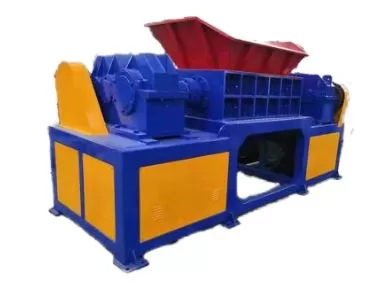In the maze of sustainability and recycling, tires present a unique challenge and opportunity. As Jacky Zhang, the CEO of Amige, I’ve ventured into the depths of recycling technologies, always seeking ways to turn today’s waste into tomorrow’s resource. Tires, with their durable composition and ubiquity, pose an interesting puzzle.

What machine is used to recycle tires, you might ask? At the heart of tire recycling is a series of machines designed to break down, shred, and repurpose these rugged materials into something new and valuable. This process not only alleviates landfill pressure but also opens doors to innovative uses for recycled rubber.
Join me as we tread deeper into the world of tire recycling, discovering the machines that make it all possible.
What Kickstarts the Tire Recycling Process?
The journey begins with tire shredders. These powerful machines take whole tires and tear them into manageable pieces, making them easier to process in subsequent steps. It’s a sight to behold – a testament to human ingenuity in the face of environmental challenges.
Why Is the Granulator Integral to Tire Recycling?
After shredding, the tire pieces move to the granulator. This machine further breaks down the material into small granules, removing steel and fiber along the way. These granules are the raw materials for countless new products, showcasing the versatility of recycled rubber.
Can Crumb Rubber Machines Further Refine the Material?
Absolutely! Crumb rubber machines take the process a step further, pulverizing the granules into even finer particles. This crumb rubber is incredibly versatile, finding its way into playground surfaces, athletic fields, and even asphalt. It’s recycling innovation at its finest.
What Role Do Steel and Fiber Separation Systems Play?
With the rubber granulated, it’s crucial to separate the remaining steel and fiber from the mix. These separation systems are pivotal in ensuring the purity of the recycled rubber, making it suitable for high-quality applications. This step exemplifies the meticulous attention to detail required in recycling processes.
How Do Screening Systems Ensure Uniformity?
The screening systems come next, sorting the rubber granules by size to ensure uniformity. This step is essential for specific applications that require consistent particle sizes. It’s all about meeting the stringent demands of the recycling market with precision.
Why Is Quality Control Essential in Tire Recycling?
Quality control and inspection stages are the guardians of tire recycling, ensuring that only the best material makes it through. Advanced techniques are used to scrutinize the recycled rubber, ensuring it meets the high standards required for its new life. This step underscores our commitment to excellence and sustainability.
Conclusion
The path to recycling tires is complex but incredibly rewarding. At Amige, we’re not just witnessing the transformation of waste into resource; we’re actively participating in it. Through our exploration of tire recycling machinery, we unlock the potential for innovation, sustainability, and a greener future.
This is the essence of our mission – to reinvent the wheel, quite literally, by giving old tires new life. Join us in this journey, and together, let’s drive towards a sustainable future.
Navigating the world of tire recycling requires expertise, innovation, and a touch of creativity. As the leader of Amige, I’m proud to share our journey and the incredible technologies that make tire recycling not just a possibility, but a reality. If you’re intrigued by the potential of recycled tires or looking to explore the recycling business further, we’re here to lead the way.
